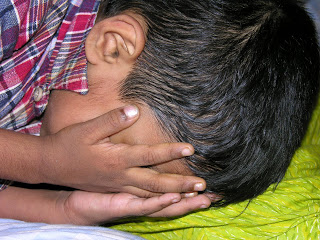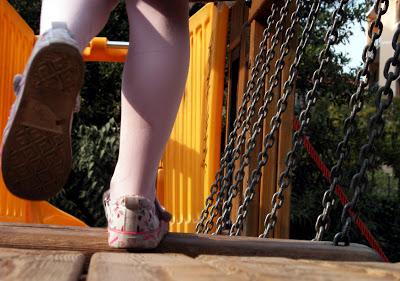What is more heart-rending than the child’s lament, “I can’t do it!”? If ever there is a time that requires our encouragement, it is when our child wants to give up. “I can’t do it!” often heralds the start of the downward self-hate spiral of “I’m not smart/fast/good enough!” that pierces the parental heart even deeper. We see a smart, fast, good child who sees nothing of that in the mirror. This is emotional courage at low low tide.
My daughter arrived in this country at age 8 from Ethiopia. In her first year or two here, she dwelled in an almost constant state of frustration, confusion, and self-doubt. Having to function every waking hour in a new language creates all kinds of neurological mayhem for children with “subtractive bilingualism.” This means that when kids lose their first language (it happens very fast when it isn’t spoken in the home or at school), while still acquiring the new one, the act of forming thoughts and ideas becomes maddeningly difficult, like stumbling around in a dark room, groping for a light switch.
Often the only solace I could give her in those “I can’t do it!” moments was the word, “yet.” “You can’t do it yet, honey. But eventually you will be able to. I know it because I believe in you. You just need more time.”
When the tears were over, I would then remind her of how many new things she had already learned, of how well she was keeping up with classmates who had lived all their lives in English. I reminded her of how she had tried and tried and tried to whistle and finally, one day, had whistled. I would remind her how short a time, really, she had been here (although with so many major life changes, it seemed like decades). “Yet,” is a word of hope, of the future, of promise. “Yet” tells us that things will be different, and better, if we just keep going and don’t give up.
 |
Part of what causes frustration and self-defeating feelings is an expectation of how long it should take to do or learn whatever it is – swimming, or memorizing the six-times-table, or doing a push-up, or tying a knot with a bow in a shoelace. How long it should take is exactly how long it does take. Of course children compare themselves to each other, and since some kids are sprinters, the kids who are long-distance runners question themselves. They fear that because they haven’t learned it yet, they won’t learn it ever.
What I have shared with K. is that I was a sprinter, but that it wasn’t necessarily a blessing. I was quick at everything in school, but because most schoolwork required little effort, I did not learn how to study! When I finally reached academic material that didn’t come easily, I failed. I thought I could hippity-hoppity-hop blithely along, but to my dismay, I found that that technique didn’t always work. I hadn’t acquired any long-distance endurance. Working hard at something that didn’t click right away, and putting in all that effort over time, turned out to be a real challenge for me and caused a lot of grief.
The Tortoise and the Hare is the story that validates the long-distance runners. At any point in the story, the tortoise could have quit, saying, “I’ll never get to the end of this race! What’s the point?” At any point in the story the tortoise could have looked at the hippity-hoppity hare running circles around him and given up, saying, “I’m not fast enough.” But that tortoise’s mom or dad must have used the word “yet” quite often, because I think what the tortoise was saying to himself as he soldiered on hour after hour was, “The race isn’t over yet.”
For myself, the running has mostly been metaphorical. I’ve never been much of an athlete, but a few years ago I decided I would set a goal of running a half-marathon in Lake Placid., New York It felt very incongruous for me to be out on training runs, running two or three, then six or seven or eight miles. This isn’t me, I would think. I don’t run! I kept at it, however, since I had agreed to run for a cause: to raise money for leukemia research. At the time, my sister’s father-in-law was battling leukemia, and on the race day I wrote his name, Alex, on the back of my shirt. Evidently, many people thought Alex was my name; eleven miles into the half-marathon (in Lake Placid? The Adirondack Mountains?) I was barely running, and I wanted more than anything to just give up and walk the rest of the way, but I kept telling myself, ‘not yet.’ Runners were passing me on their second loop (it was a combined marathon/half-marathon course.) “Come on, Alex, you can do it,” they said as they passed me. “Keep going, Alex. Stay strong.” “Looking good, Alex! Almost there!” So I thought about the real Alex, who had a much bigger challenge than this, and I kept running, up the last hill toward the old Olympic stadium. That’s what encouragement feels like.


